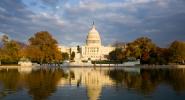Sign up to receive email updates
Breast Cancer Awareness Month: A Reminder of the Importance of Early Detection
Picture a sold-out football game at the Superior Dome in Marquette packed with 8,000 fans. Now, multiply that number by five and that represents roughly the same number of American women and men who die from breast cancer each year. But there is some good news: thanks to early detection and improved treatments, death rates from breast cancer have been declining since 1989. October is Breast Cancer Awareness Month and the perfect opportunity to learn more about breast screening guidelines that have been the subject of controversy in recent years.
As a doctor who has treated patients in Northern Michigan for nearly 30 years, I have come to learn that while the value of early detection is widely recognized, conflicting screening recommendations can cause confusion about the age, frequency and method of screening. Why is there a lack of consensus? There are several reasons, including differing interpretations of data and changing screening or treatment options. Conflicting judgments about how to assess the benefits and harms of screening also play a role. In order to determine what is best for you, it may be helpful to learn more about the guidelines-making institutions and organizations, and about how their recommendations differ.
The United States Preventive Services Task Force, the National Comprehensive Cancer Network and the American Cancer Society are three respected organizations that are frequently referenced and provide differing guidelines. Specifically:
• The USPSTF recommends biennial mammography for women ages 50 to 74, as evidence shows women in this age range benefit the most from screening. For women ages 40 to 49, the Task Force encourages women to speak to their doctors to decide whether screening is appropriate for them.
• NCCN, an alliance of 27 leading cancer centers, recommends women at average risk at age 40 and older receive an annual mammogram and consider digital breast tomosynthesis (DBT). DBT can reduce false-positives and may be particularly beneficial to women with dense breasts.
• ACS advises that women ages 40-44 decide with their health care professionals about when to start receiving mammograms. ACS also recommends that women ages 45-54 receive yearly mammograms, and at age 55 and older get mammograms every two years — though women who want to keep having yearly mammograms should be able to do so.
As screening and treatment options for breast cancer continue to evolve, we can expect guidelines to evolve as well. A consensus among organizations that issue screening guidelines would make decision-making easier, but until then, you can be your own best advocate and discuss your options with your health care professional. Decide together when to start screening, how often to be screened and which screening method to choose, taking into consideration your family history and personal risk factors.
Mammograms can and do save many lives. Get screened.
Dan Benishek, R-Crystal Falls, is the United States Representative from the Michigan's First Congressional District. A link to the original article can be found here.







